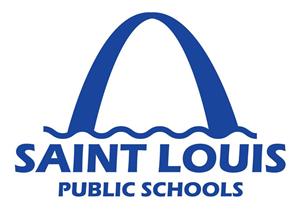- Wilkinson Early Childhood Center @ Roe Elementary School
- Title I Information/Documentation
Family Educator - LaToya Madgett
Page Navigation
-

 Title I Information and Documentation
Title I Information and Documentation- "Title I" is the federal program that provides funding to local school districts to improve the academic achievement of disadvantaged students. It is part of the Elementary and Secondary Education Act first passed in 1965. That Act is reauthorized by Congress from time to time, and often given a new name.According to the website for the U.S. Department of Education, Title I is also known as the following: Education for the Disadvantaged–Grants to Local Educational Agencies, Improving the Academic Achievement of the Disadvantaged, Title I ESEA, and Title I LEA Grants.Program Description
Title I, Part A (Title I) of the Elementary and Secondary Education Act, as amended (ESEA) provides financial assistance to local educational agencies (LEAs) and schools with high numbers or high percentages of children from low-income families to help ensure that all children meet challenging state academic standards. Federal funds are currently allocated through four statutory formulas that are based primarily on census poverty estimates and the cost of education in each state.
- Basic Grants provide funds to LEAs in which the number of children counted in the formula is at least 10 and exceeds 2 percent of an LEA's school-age population.
- Concentration Grants flow to LEAs where the number of formula children exceeds 6,500 or 15 percent of the total school-age population.
- Targeted Grants are based on the same data used for Basic and Concentration Grants except that the data are weighted so that LEAs with higher numbers or higher percentages of children from low-income families receive more funds. Targeted Grants flow to LEAs where the number of schoolchildren counted in the formula (without application of the formula weights) is at least 10 and at least 5 percent of the LEA's school-age population.
- Education Finance Incentive Grants (EFIG) distribute funds to states based on factors that measure:
- a state's effort to provide financial support for education compared to its relative wealth as measured by its per capita income; and
- the degree to which education expenditures among LEAs within the state are equalized.
ParticipationED’s most recent data on participation in the program are from school year (SY) 2009-10. In SY 2009-10 more than 56,000 public schools across the country used Title I funds to provide additional academic support and learning opportunities to help low-achieving children master challenging curricula and meet state standards in core academic subjects. For example, funds support extra instruction in reading and mathematics, as well as special preschool, after-school, and summer programs to extend and reinforce the regular school curriculum.
That same year Title I served more than 21 million children. Of these students, approximately 59 percent were in kindergarten through fifth grade, 21 percent in grades 6-8, 17 percent in grades 9-12, 3 percent in preschool, and less than one percent ungraded.
LEAs target the Title I funds they receive to public schools with the highest percentages of children from low-income families. Unless a participating school is operating a schoolwide program, the school must focus Title I services on children who are failing, or most at risk of failing, to meet State academic standards.
Many of our district's Title I information and documentation can be found below. Please contact me at Landon.Brownfield@slps.org or by clicking here with any questions, comments, or concerns.
*Updated 02/18/2016 at 10:50 AM.
-
2016-2017 School/Parent/Student Compact
2016-2017 Title I - Wilkinson ParentSchoolCompact Revised.pdf 285.69 KB (Last Modified on February 18, 2016)

